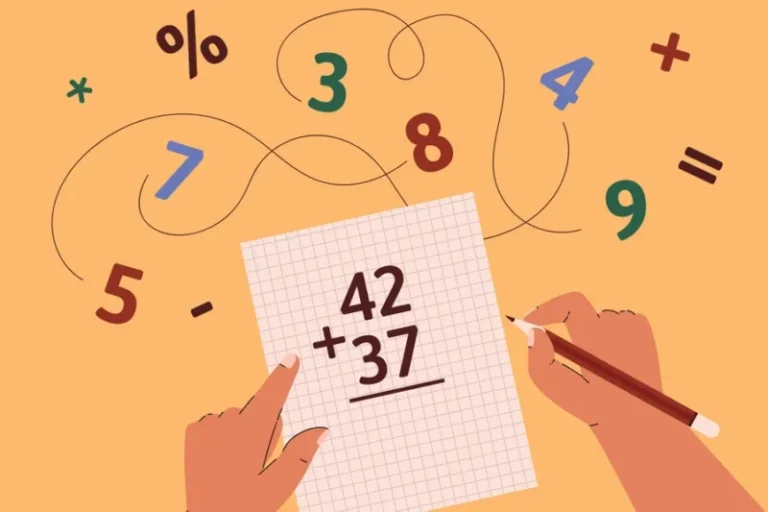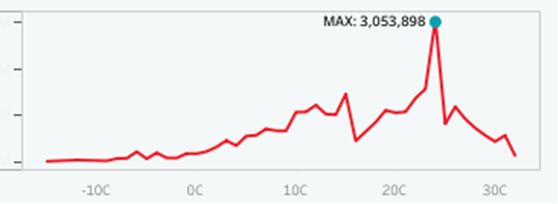[해외 DS] 다람쥐는 도토리를 어디에 묻었는지 기억할까?
다람쥐, 먹이 종류와 서식지 특성에 따라 비축 전략 달라 시각·공간·후각적 단서를 이용해 은폐 위치 기억할 수 있어 기억 부하를 줄이는 '청킹', 재방문을 통한 '복습'도 척척
[해외DS]는 해외 유수의 데이터 사이언스 전문지들에서 전하는 업계 전문가들의 의견을 담았습니다. 저희 데이터 사이언스 경영 연구소 (GIAI R&D Korea)에서 영어 원문 공개 조건으로 콘텐츠 제휴가 진행 중입니다.

북반구에서 겨울이 다가오면 사람들은 실내로 숨어들고 삶의 속도가 느려지는 것처럼 보이지만, 다람쥐의 삶은 분주해진다. 다람쥐는 숲과 공원, 뒷마당에서 쉴 새 없이 덤불을 헤집고 다니며 견과류와 씨앗을 흙 속에 집어넣는 등 든든한 겨울나기를 위해 만반의 준비에 들어간다.
다람쥐 한 마리는 캐싱(caching)이라는 과정을 통해 한 시즌에 최대 3,000개의 견과류를 땅에 묻는다. 수십 개의 장소에 견과류를 저장하고 심지어 종류별로 공간을 나눠 정리하는 모습도 관찰됐다. 다람쥐는 냄새를 맡으면서 아무거나 무작위로 가져가는 걸까, 아니면 귀중한 식량을 어디에 보관했는지 실제로 기억하는 걸까?
다람쥐의 비축 전략, 행동반경 따라 달라져
점점 더 많은 연구가 다람쥐가 기억한다는 것을 말하고 있다. 다람쥐와 다른 동물들의 행동 및 인지적 적응을 연구하는 영국 엑서터대학교의 연구원 리사 리버는 다람쥐가 꽤 많은 전략을 세우고 있다고 전했다. 실제로 다람쥐는 먹이를 저장할 때 두 가지 체계적인 접근 방식을 취하는데, 식량을 한두 곳에 모두 묻어두는 ‘라더 비축’과 여러 장소에 먹이를 분산 저장하는 ‘분산 비축’이 그것이다.
다람쥐가 어떤 방법을 선택하느냐에 따라 다람쥐의 마음속에는 많은 요소가 복합적으로 고려된다. 먹이의 위치·가용성 및 종류·다람쥐의 서식지 특성·포식자에 대한 취약성·캐싱을 할 때 주변은 얼마나 많은 다른 친구가 있는지 등이 모두 결합하여 비축하는 방향을 결정한다고 분석됐다. 일부 다람쥐는 두 가지를 모두 사용하는 ‘혼합’ 방법을 사용하나 일반적으로는 다람쥐 종에 따라 한 가지 또는 다른 접근 방식을 사용한다. 예를 들어, 미국 붉은 다람쥐(Tamiasciurus hudsonicus)는 소수의 소나무에 먹이를 의존한다. 솔방울을 모아 집 나무 밑에 먹다 남은 솔방울과 껍질을 쌓아 큰 더미를 만든다. 집 나무 밑에서 비축하는 이 편리한 구조 덕분에 붉은 다람쥐는 가까운 거리에서 식량을 감시하고 방어할 수 있어 라더 비축 형식을 택했다.
한편 미국 동부에서 가장 흔한 뒷마당 다람쥐인 유라시아 붉은 다람쥐(Sciurus vulgaris), 여우 다람쥐(Sciurus niger), 동부 회색 다람쥐(Sciurus carolinensis)는 분산 비축을 선호하는 경향이 있다. 사는 지역에 따라 히코리너트·호두·헤이즐넛·도토리 등 다양한 먹이에 의존하는 종들이다. 먹이의 다양성으로 인해 미국 붉은 다람쥐에 비해 더 넓은 지역에서 먹이를 구해야 하므로, 하나의 큰 은신처를 지키기 어렵다. 이들 다람쥐가 먹이를 분산해서 비축하는 이유를 설명하는 바다. 이 전략은 도둑들이 은폐 위치를 찾을 수 있다는 위험이 커지지만, 각 저장소의 크기를 제한해 비교적 손실이 적고, 라더 비축을 하는 다람쥐처럼 전체를 잃어버릴 위험도 없다는 장점이 있다.
아울러 연구자들은 분산 비축 전략을 취한 다람쥐가 가장 아끼는 식량을 보호하기 위해 추가적인 조처를 하는 것을 관찰했다. 아몬드와 땅콩을 받은 여우 다람쥐는 땅콩보다 아몬드를 선호하기 때문에 아몬드를 더 멀리 묻어뒀다. 또한, 땅콩보다 아몬드를 더 낮은 밀도로 저장해서 견과류를 노리는 경쟁자를 따돌리거나 손실의 정도를 최소화하는 전략을 구상했다. 대신 은폐 장소 수가 증가해서 기억 부하도 증가한다. 정말로 여우 다람쥐는 은폐 위치를 기억하고 있을까, 아니면 사람들이 일반적으로 생각하는 대로 대부분 잊어버릴까?
기억에 관한 연구들, 다람쥐의 공간 매핑 능력 증명해
몇몇 연구에 따르면 다람쥐는 잊어버리지 않는다. 1991년 버클리캘리포니아대학교의 심리학 및 신경과학 명예 교수인 루시아 제이컵스와 그녀의 연구팀은 사람의 손에서 자란 회색 다람쥐 8마리한테 각각 견과류 10개씩을 주고 같은 밀폐된 공간에서 비축 행동을 관찰했다. 며칠 후 연구진이 각 다람쥐를 다시 그 지역으로 돌려보냈을 때, 8마리의 다람쥐(실험집단)들은 다른 다람쥐(통제집단)가 묻어둔 견과류보다 두 배나 많은 양의 견과류를 회수하고 있었다. 흥미롭게도 실험 다람쥐들은 견과류를 가져올 때 먹이를 묻을 때와는 다른 경로를 따랐다. 이는 은폐 위치가 어디에 있었는지 기억하고 있어야만 가능한 일이었다. 제이컵스는 이 연구가 고도로 통제된 조건에서 이루어졌다고 강조했다.
다람쥐의 놀라운 기억력에 대한 다른 연구 결과도 있다. 영국 체스터대학교에서 인지 진화를 연구하는 피자 카이 차우(Pizza Ka Yee Chow)는 2017년 실험실에서 사육한 다람쥐에게 직사각형 퍼즐 상자에서 헤이즐넛을 꺼내기 위해 올바른 레버 조작을 수행해야 하는 과제를 부여했다. 그리고 22개월 후, 차우는 다람쥐에게 새로운 과제처럼 보이도록 삼각형 퍼즐 상자에 다른 색상과 다른 레버를 갖춘 또 다른 과제를 제시했다. 하지만 이 과제에서도 이전 과제와 동일한 레버 전략을 사용하여 견과류를 열어야 했고, 다람쥐들은 이를 그대로 적용했다.
다른 연구자들은 다람쥐가 숨겨진 견과류를 찾는 방법에 대한 단서를 발견했다. 열렬한 견과류 사냥꾼인 다람쥐는 후각에 부분적으로 의존하여 먹이를 찾아내지만, 1986년에 발표된 연구에 따르면 후각은 최후의 수단으로, 시각 및 공간적 단서와 같은 다른 도구를 먼저 사용하여 저장소를 찾아낸다고 한다. 실제로 1997년에 발표된 한 연구에 따르면 회색 다람쥐는 원래 은신처 옆에 심겨 있던 깃발의 위치에 따라 땅을 파는 위치를 조정하여 땅속에 묻힌 견과류를 찾는 것으로 나타났다. 이는 다람쥐가 이러한 공간적 단서를 사용할 가능성이 높다는 것을 의미한다. 실험에 참여한 회색 다람쥐는 최대 2개월 동안 최대 24개의 캐시 위치를 기억할 수 있는 것으로 조사됐다. 최근에는 실험실에서 사육된 다람쥐가 덤불이나 나무와 같은 주변 랜드마크의 상대적 위치를 이용해 밀폐된 연구 공간에서 은신처를 찾아낼 수 있다는 사실을 밝혀냈다.
흔히 볼 수 있지만, 흔치 않은 두뇌를 가진 다람쥐들
한편 제이컵스의 연구실은 다람쥐의 뇌에 대해 몇 가지 놀라운 사실을 발견했는데 대부분의 소형 포유류는 겨울이 다가오는 동안 뇌가 수축하는 반면, 다람쥐의 뇌는 이 시기에 확장되어 계절에 따라 인지 역량이 증가한다는 것을 알 수 있다. 그리고 여우 다람쥐가 같은 종류의 견과류를 서로 가까이 묻어두는 경향은 인간도 사용하는 ‘청킹(chunking)’이라는 정보 간소화 전략의 일종일 수 있다고 한다. 견과류를 종류별로 정리하면 기억 부하가 줄어들어 기억의 정확도가 높아질 수 있다는 뜻으로 풀이된다.
회색 다람쥐는 서식 범위가 비교적 작기 때문에 비축 식량을 쉽게 찾아낼 수 있다. 또한 일부 회색 다람쥐는 무성하게 자란 나뭇잎을 조심스럽게 재배치하는 등 매장 장소를 다시 방문하는 특이한 습성이 있다. 이 다람쥐는 견과류를 파내서 다시 묻기도 한다. 즉, 다람쥐는 9월에 캐시에 저장했다가 2월까지 기억해야 하는 것이 아니라 재정비를 통해 위치를 상기하는 행위를 수행한다는 것이다.
다람쥐는 때때로 자신의 은신처를 보호하기 위해 가짜로 땅을 파고 실제로는 땅속에 견과류를 넣지 않는다. 다른 다람쥐들의 주의를 분산시키기 위해 함정을 파놓는 치밀함을 보인다. 이 예리한 두뇌를 가진 작은 설치류가 어떻게 먹이를 찾고 보호하는지 아직 모르는 것이 많다. 하지만 도시에서 흔히 볼 수 있는 회색다람쥐의 겉보기에는 무질서해 보이는 행동 뒤에는 인상적인 전략적 산술이 작용하고 있다는 것은 확신할 수 있다.
Do Squirrels Remember Where They Buried Their Nuts?
Squirrels spread their fall bounty across several locations. But do they have a key to this treasure map?
As winter approaches in the Northern Hemisphere, people retreat indoors, and the pace of life seems to slow—but not for squirrels. Across forests, parks and your backyard, these animals go into overdrive, scurrying ceaselessly through the undergrowth and stuffing nuts and seeds into the soil.
Although it might look like a mad dash to survive the winter, the frantic vibe masks some meticulous preparation. A single squirrel can bury up to 3,000 nuts in a season in a process known as caching. It can store nuts across dozens of locations and even spatially organize them by type. What’s behind this obsessive pantry planning? Do squirrels just randomly retrieve whatever they sniff out, or do they actually remember where they place this precious stash?
A growing body of research suggests that they do remember. “They’re not just burying a bunch of stuff and hoping that they’ll find it in the future. They’re strategizing quite a lot,” says Lisa Leaver, a researcher who studies the behavioral and cognitive adaptations of squirrels and other animals at the University of Exeter in England.
In fact, squirrels take two methodical approaches to storing their food: larder hoarding, in which the fluffy-tailed rodents bury their entire bounty in one or two locations, and scatter hoarding, which involves the squirrels splitting a stash among multiple locations dotted across a landscape.
“In a squirrel’s mind, there are a lot of factors at play” in which method they choose, says Pizza Ka Yee Chow, who studies the evolution of cognition at the University of Chester in England. The foods’ location, availability and type, the squirrels’ local habitat and vulnerability to predators “and how many other buddies are around when they are doing the caching” all combine to steer them toward scattering or hoarding, Chow explains.
These two strategies exist along a continuum, and some squirrels go with the “mixed” method, where they will do both, Chow says. Usually different squirrel species will practice one or the other approach, however.
For instance, American red squirrels (Tamiasciurus hudsonicus) often depend on a small number of pine trees for their food, says Lucia Jacobs, a professor emerita of psychology and neuroscience at the University of California, Berkeley. They’ll gather pine cones and create a midden—a large pile of cones and scales left over from eating—typically at the base of a home tree. The convenient setup allows the animals to oversee and defend their bounty at close range, making larder hoarding worth their while.
Meanwhile the Eurasian red squirrel (Sciurus vulgaris), the fox squirrel (Sciurus niger) and the eastern gray squirrel (Sciurus carolinensis)—the most common backyard squirrel in the eastern U.S.—tend to favor scatter hoarding. Depending on where they live, these species rely on a range of food sources, including hickory nuts, walnuts, hazelnuts and acorns. This variety pushes these species to forage over a larger area, compared with the American red squirrel, which makes it difficult to closely guard a single large stash—and may explain why they scatter hoard. Although this strategy leaves more caches for pilferers to find, each cache’s smaller size eliminates the risk that the squirrels will lose their entire stash in one go.
Jacobs and her colleagues have also observed scatter-hoarding squirrels taking extra steps to protect their most coveted stash. Fox squirrels presented with almonds and peanuts will bury the almonds, which they prefer, farther away from the source and at lower densities than the peanuts, Jacobs says. “So the squirrel carries [a nut] a species-specific distance and caches it at a species-specific density.” These burial tactics help to throw off nut-snacking competitors. But do they also make it tough for the burier to keep tabs on all of its stash?
Not according to a few studies. In 1991, Jacobs and her team provided eight hand-raised gray squirrels with 10 nuts each to bury in the same enclosed area. When the researchers released each squirrel back into the area several days later, the animals “were retrieving twice as many of their own [nuts] as [those of] another squirrel’s cache,” Jacobs says. Interestingly, the squirrels also followed a different path when retrieving their nuts, compared with the one they’d taken to bury this food. “They could plan a trajectory through their 10 caches, which they could only do if they had a memory of where those caches were,” she says.
That study took place under highly controlled conditions, Jacobs cautions. But others have gone on to document squirrels’ impressive memory span. In a 2017 experiment, Chow gave lab-reared squirrels a task that required manipulating the right set of levers to release hazelnuts from a rectangular plexiglass puzzle box. Then, 22 months later, Chow presented them with another puzzle box that was triangularly shaped and featured different colors and a different lever layout to make it appear to the squirrels like a novel task. This task still required the same lever strategy to release the nuts as the previous one, however—and that’s the approach the squirrels applied. “The solution [the squirrels] used was the same as two years before,” Chow says. “That’s how we knew that they still remembered it.”
Meanwhile Jacobs’s lab has made some striking findings on squirrel brains. This research shows that while most small mammals experience brain shrinkage during the approach to winter, squirrels’ brain expands at this time, which may indicate a seasonal increase in cognitive load.
Others have uncovered clues about how squirrels might locate their hidden nuts. The fervent nut hunters do rely partially on their sense of smell to help them pinpoint their food, yet a 1986 study suggested that it’s a last resort: they first prioritize other tools such as visual and spatial cues to guide them to their stash. In fact, a 1997 study showed that gray squirrels adjusted where they dug for their buried nuts based on the relocation of flags that were originally planted beside the caches. That indicated that the squirrels were likely also using these spatial cues. Gray squirrels in the experiment could remember up to 24 cache locations for up to two months. More recently Chow has shown that lab-reared squirrels can use the relative position of nearby landmarks such as bushes and trees to guide them to their caches in an enclosed study area.
Spatial mapping would make sense in gray squirrels, Leaver says. The animals “have relatively small home ranges that they know inside [and] out. If you spent your whole life hiding bits of food that you relied on in your house, you would know where you’d put it,” she says.
Further research from Jacobs’s lab suggests that the fox squirrel’s tendency to carefully bury nuts of the same type close together may indicate an information-streamlining strategy called “chunking,” which humans also use. In squirrels, organizing nuts by type likely “reduces memory load and hence should increase accuracy of recall,” Jacobs explains.
She adds that some gray squirrels have a quirky habit of revisiting their burial sites, where they’ll paw through the overgrowth and then carefully rearrange the leaves. Sometimes squirrels will even excavate and then rebury their nuts. This strikes Jacobs as a kind of geographic revision: “It’s not like they cache in September and then they have to remember through till February,” she says. “They are out there every day rehearsing, rehearsing, rehearsing.”
And when they’re not refreshing their own memory, these crafty creatures continue working to throw others off their trail—with some surprisingly deceptive tactics, Chow says. “[Researcher] Mike Steele, he found that some squirrels do fake digging to protect their cache, but they don’t actually put any nuts in it,” Chow adds. “They trick others into thinking, ‘Hey, I put my nuts in here!’ just to distract them.”
There’s a lot still to learn about how these sharp-brained little rodents find and protect their food. Yet we can be sure that behind their seemingly scatterbrained fall behavior, there is some impressive mental arithmetic at play, even in the ubiquitous urban gray squirrel. “Because it’s such a common urban species, everyone thinks, ‘Oh, that’s just a squirrel,’” Jacobs says. “But it’s actually a very unique animal.”






